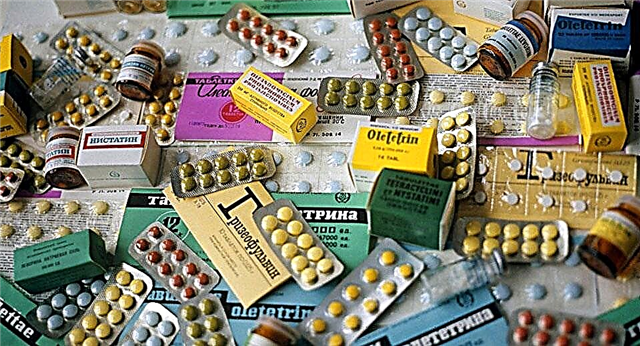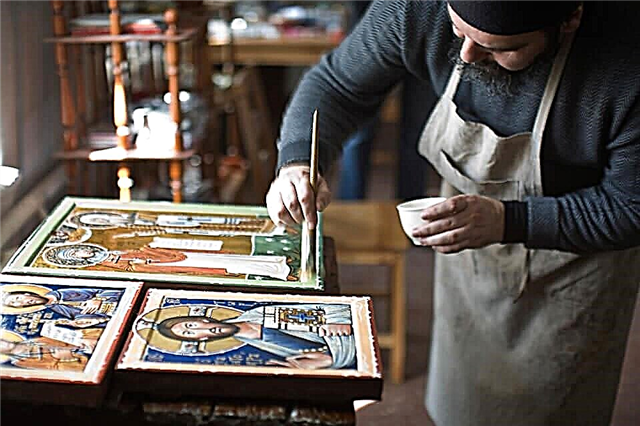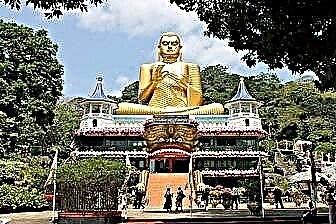Before a tourist walking along the central street of Suzdal - Kremlevskaya - the white-stone Kremlin opens in all its splendor. It is made of smooth stone, snow-white like a bride's dress, and its blue domes resemble a girl's kokoshnik.
Short story
It was in this place, where the museum-ensemble "Suzdal Kremlin" is now located, once, in the XII century, that Suzdal began to be built... Here, in the bend of the Kamenka River, the first ramparts and earthen embankments were built, blocking the path of the enemy, and the first city cathedral was built. From the north, the Kremlin was surrounded by Kamenka, and from the east, south and west the fortress was protected by ditches filled with water.

Scheme of the Suzdal Kremlin
Now the ditches are covered with earth, while the earthen ramparts have partially survived. Once upon a time, log walls, towers and gates towered on the ramparts, but all wooden fortifications burned down in 1719. Being the political center of the city, the Suzdal Kremlin served as the residence of the prince and the bishop and persons subordinate to them (prince's squad, etc.). At present, several churches and an ensemble of bishops' chambers with the ancient Nativity Cathedral have been preserved in the Suzdal Kremlin.
The architectural ensemble of the Suzdal Kremlin

General view of the Suzdal Kremlin
1. Nativity Cathedral
The Cathedral of the Nativity of the Virgin (1222 - 1225) is the compositional center of the Suzdal Kremlin and the oldest stone building in the city... The Laurentian Chronicle reports that the Nativity Cathedral was created on the site of the collapsed temple, founded by Vladimir Monomakh at the end of the 11th century. Monomakh's Cathedral was a powerful six-pillar building, built of flat bricks and topped with one chapter. The foundation, built on piles, went only 55-60 cm deep, which was not enough for the massive temple and became the reason for its fragility. In the middle of the 12th century, Prince Yuri Dolgoruky, who made Suzdal the capital of the Rostov-Suzdal principality, decided to decorate his capital city with white-stone churches. On the site of the Monomakh Church, Yuri erected a new cathedral of tuff and white stone and consecrated it in the name of the Nativity of the Most Holy Theotokos.

View of the Cathedral of the Nativity of the Blessed Virgin Mary on the territory of the Suzdal Kremlin
In 1222, the grandson of Yuri Dolgoruky, Georgy Vsevolodovich, dismantled the dilapidated building and rebuilt it. Inside, the walls of the cathedral were lined with plinths (wide, flat bricks) and faced with limestone slabs. In 1222 - 1225 the Nativity Cathedral was decorated with magnificent stone carvings; today only fragments of it have survived. The facade of the cathedral, its walls and portals are decorated with carved lions, floral ornaments and images of female masks carved in stone.
In the 1230s, the Golden Gates were installed in the western and southern portals of the Nativity Cathedral, which have survived to this day. High door leaves, made of sheets of red copper, are painted with gold, depicting the evangelical motives and deeds of angels, especially the Archangel Michael, the patron saint of princes and their military enterprises. Glowing softly in gold against the velvety-black background of copper plates, "Golden Gate" amazes with a wonderful ornamental pattern, in which each individual plot and each elegantly written figure are harmoniously outlined.

Fragment of painting in the Cathedral of the Nativity of the Blessed Virgin Mary on the territory of the Suzdal Kremlin
The "gate" handles are made in the form of lion masks holding massive rings in their mouths. The same pattern is inherent in the fresco painting of the cathedral in 1233. Fragments of the rarest frescoes of the 13th century still cover the walls of the temple.
They depict the strict figures of ascetic elders, floral and geometric ornaments. The Nativity Cathedral was the first city church intended not only for the prayers of the princely family, but also for a large number of parishioners, therefore, elements of the national Russian style were reflected in its decoration. The sons of Prince Yuri Dolgoruky, princes from the Shuisky family, representatives of famous boyar families, etc. are buried in the necropolis of the cathedral.
2-3. Bishops' chambers with a refectory episcopal church

Bishops' chambers with a refectory episcopal church on the territory of the Suzdal Kremlin
In the western part of the Suzdal Kremlin, the ensemble of the bishop's court dominates. The currently existing chambers are part of the grandiose architectural complex of residential and commercial buildings that made up the bishop's palace in the 17th century..
The oldest buildings of the bishop's court include the building of the first floor of the coal building of the chambers, which has preserved the white-stone masonry, and the refectory church, restored in the forms of the 16th century. This church is crowned with an eight-pitched roof with a small dome and is surrounded by an arched gallery and a covered porch with a brick tent. The main entrance to the chambers, located in front of the western portal of the Nativity Cathedral, leads to the reception hall - the Cross Chamber.
4. Cathedral bell tower

View of the Cathedral Bell Tower on the territory of the Suzdal Kremlin
In 1635, by order of Bishop Serapion, a bell tower was erected south of the Nativity Cathedral... It is a tall eight-sided pillar topped with a tent. At the top of the pillar, there were ringing arches where bells hung, and in the 17th century a clock was installed. At the end of the 17th century, a church was created in the bell tower, connecting it with the bishop's chambers with the help of a covered gallery. In 1967, the chimes were restored on the bell tower, beating every minute, quarter of an hour and an hour.
Nikolskaya church from the village of Glotovo The Nikolskaya church, built in 1766 in the village of Glotovo, Vladimir region, was transported to the Suzdal Kremlin in 1960, to the place of the lost Church of All Saints. Like a Russian hut, the Nikolskaya Church was cut down with an ax using wooden nails. Good proportions of log cabins, hewn gabled roofs and domes, finished with silvery aspen "plowshares", give a simple structure harmony and proportion. On three sides, the temple is surrounded by an open gallery. Rising on the high bank of the Kamenka, far from the brick buildings of the Kremlin, the Nikolskaya Church harmoniously fits into the surrounding rural landscape.
6. Assumption Church

View of the Assumption Church on the territory of the Suzdal Kremlin
At the entrance to the Kremlin from the Market Square, the attention of a tourist is attracted by the elegant, red-green building of the Assumption Church. In the middle of the 15th century, on this place, in the eastern part of the Kremlin, the princely court of Grand Duke Ivan III was located, and in this courtyard there was a wooden Assumption Church.
The time of construction of the present church is not known for certain, but it is likely that a stone temple was erected on the site of a burnt wooden one in 1650.... The Assumption Church is a vivid example of the Naryshkin Baroque style, which is rare in Suzdal: the quadruple on the octagon is gracefully decorated and completed with a drum of the original two-tier shape, crowned with a small dome.
8. Summer St. Nicholas Church

View of the summer Nikolskaya Church on the territory of the Suzdal Kremlin
In addition to the wooden St. Nicholas Church, brought from the village of Glotovo, in the southeastern part of the Suzdal Kremlin, there is a stone church of the same name near the rampart. The Church of St. Nicholas was built in 1720 - 1739 on the site of the burnt church. The nearby St. Nicholas Gate leading to the bridge across Kamenka suggests that the St. Nicholas Church stood here even before the fire. Since ancient times in Russia, Nicholas the Wonderworker was considered the patron saint of sailors and travelers. Summer St. Nicholas Church is typical for Suzdal: its three-part-axial ensemble consists of a single-domed church, a bell tower attached to it with a tent-pipe and a refectory connecting them.
7. Nativity of Christ Church

View of the Nativity of Christ Church on the territory of the Suzdal Kremlin
Summer St. Nicholas Church has a paired "winter" Church of the Nativity of Christ, built on the model of the so-called warm temples intended for winter services. The three-part Church of the Nativity of Christ, built of bricks, resembles a residential building in shape. The temple ensemble consists of the main volume, to which a pentahedral apse, a refectory and a vestibule are attached. The main church and the refectory are covered with a gable roof, completed with a thin carved drum with a bulbous cupola. The whitewashed walls of the church are decorated with pilasters, a cornice belt and a frieze. Arched windows are framed with stone platbands, and the vestibule is crowned with a front with a fresco of the Nativity of Christ.
Attraction rating:











